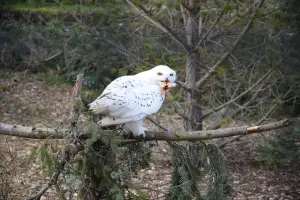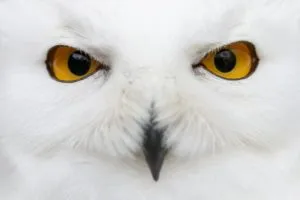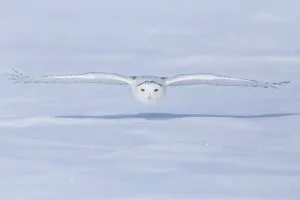Snowy owls (Bubo scandiacus) are big majestic birds inhabiting the Arctic region well-known for many as Harry Potter’s friendly pet – Hedwig.
Snowy owls are also known as the arctic owl, polar owl, or white owl.
Snowy owls are not typical owls – they have unusual features and habits that make them unique. In this article, we reveal the 15 most curious facts about snowy owls and their life in the Arctic.
- 1. Snowy owls eat small rodents, but also other birds!
- 2. Snowy owls swallow their prey whole!
- 3. Snowy owls live only in the Northern Hemisphere.
- 4. Snowy owls can fly up to 150m heights.
- 5. Snowy owls can see the furthest out of all the owls.
- 6. Snowy owls are diurnal, unlike most owls.
- 7. Snowy owls nest on the ground.
- 8. Snowy owls are endangered in Norway.
- 9. Snowy owls are the second largest owls in the world.
- 10. Snowy owls don’t like living in dense forests like the rest of the owls.
- 11. Snowy owls can fly at speeds up to 80km/h (50mph).
- 12. Snowy owls can spin their heads to 270 degrees.
- 13. Snowy owls’ dense feathers on their body AND FEET help them survive in the Arctic cold.
- 14. Snowy owls fly very silently, despite their size.
- 15. The oldest snowy owl recorded was 30 years old.
- Related questions
1. Snowy owls eat small rodents, but also other birds!
Snowy owls are carnivorous so their food source is meat. During the breeding season in the summer, their favourite prey is lemmings – highly abundant small rodents in the Arctic tundra.
In the winter, snowy owls prey upon larger birds like grouse and sea ducks
However, when food is scarce, snowy owls can’t be picky so they can be seen feeding on unusual prey such as hares, squirrels, fish, or even other smaller owls.
Interested to find out what else snowy owls like to eat and how they catch it? See our article, “Are snowy owls carnivores?”.
2. Snowy owls swallow their prey whole!
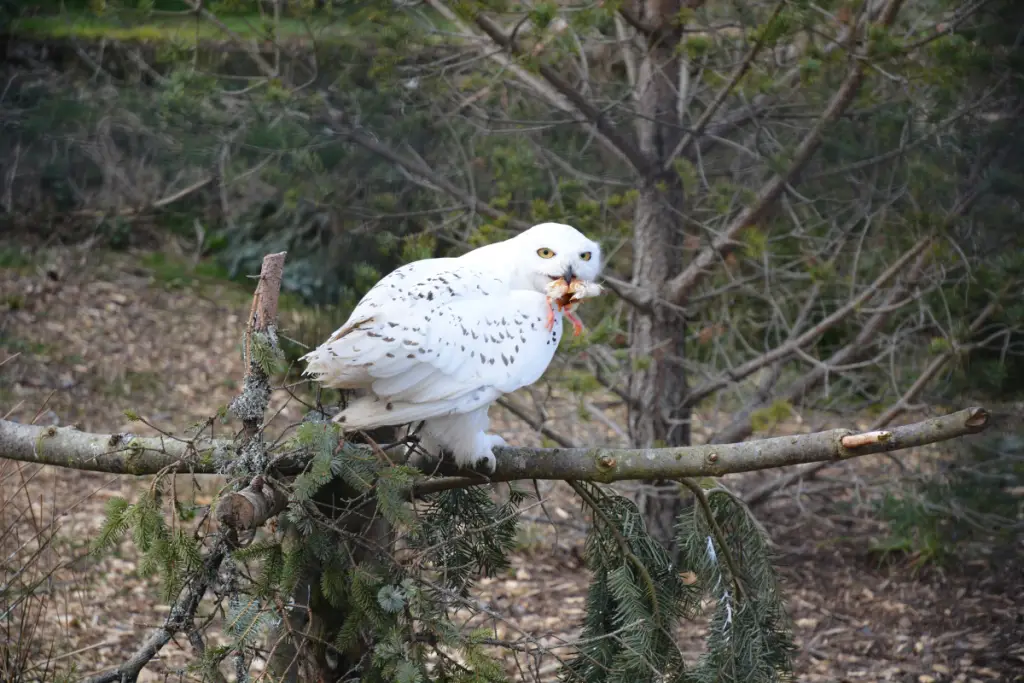
Snowy owls are fierce meat-eaters but do not have big sharp teeth to chew their food with. Actually, they just swallow their prey whole like they do with small rodents.
When the prey is larger, snowy owls tear their food into pieces using their sharp beaks and claws.
3. Snowy owls live only in the Northern Hemisphere.
Snowy owls have a circumpolar range. In their wild habitat, snowy owls are found only in the Northern Hemisphere which explains why they are also called the Arctic owl.
In the summer, snowy owls breed in coastal Alaska, Canada, Greenland, and Scandinavia. During the winter they are found in the northern parts of the USA, Europe, and Asia.
However, occasionally snowy owls move further south in search of food and have been recorded on rare occasions in Iceland and Scotland.
See our full article to find out more about whether snowy owls hibernate or migrate.
4. Snowy owls can fly up to 150m heights.
Snowy owls can fly as high as 150m altitude1 (source: E. Potapov and R. Sale, The Snowy Owl, 2013). However, when hunting they remain closer to the ground flying 10-15m above it, ready to grab the prey at any moment2 (source: Canadian Wildlife Federation).
5. Snowy owls can see the furthest out of all the owls.
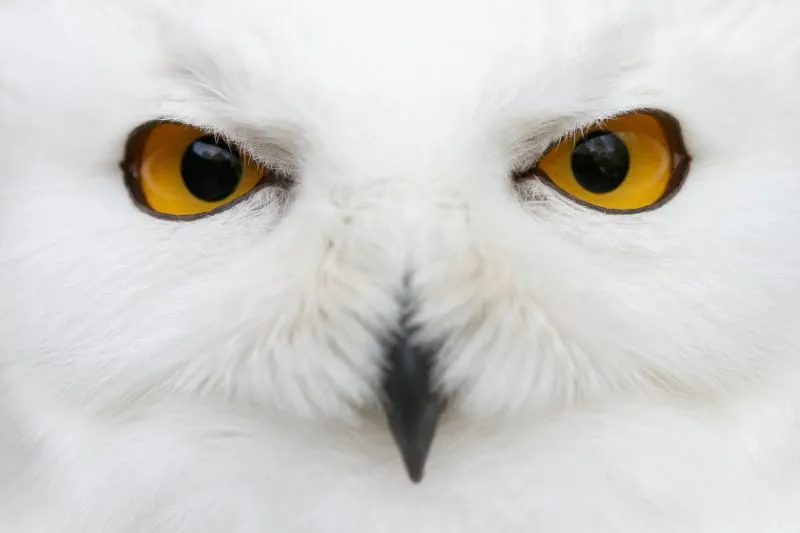
Snowy owls have eyes equipped to see at long distances having a dioptre of 0.6.
They can’t see close objects very well, but the bristles on their beaks help the owls sense what’s nearby.
6. Snowy owls are diurnal, unlike most owls.
Owls are so famous for their nocturnal hunting habitats that people have started using it as a nickname for someone who is active at night and sleeps during the day.
However, snowy owls are diurnal and they hunt during the day when the prey is most active in the Arctic.
Snowy owls live in the Arctic tundra where in the summer the sun remains visible even during the night, so the owls are active at any time there.
Snowy owls don’t have bright yellow eyes by chance, they help them adapt to the light and allow them to see well in daytime.
7. Snowy owls nest on the ground.
Snowy owls’ nests are small depressions in the ground, usually dug out by the female3 (source: Bird Fact).
They don’t have twigs, mud, and grass like a traditional nest, but are often covered in molted feathers.
Snowy owls like to locate their nests on small hilltops or elevated mounds so that the incubating bird can have a superior view of the surroundings.
8. Snowy owls are endangered in Norway.
In 2010 snowy owls were added as endangered to the Norwegian Red List of species at risk of extinction4 (source: Bird Life, Norway).
Sadly, the worldwide population of snowy owls is also declining and during the last IUCN assessment in 2021 the bird was announced as “vulnerable”. This is the last classification before “endangered”.
The most recent estimation of mature snowy owls left is 14 000 – 28 000 individuals, with approximately 1 200 – 2 700 pairs of snowy owls in the European population5 (source: IUCN).
The biggest threats to snowy owls are human activities and urbanization, as well as the indirect effects of global warming.
If you want to find out more about the causes of snowy owls’ declining populations, read our full article on why are snowy owls endangered.
9. Snowy owls are the second largest owls in the world.
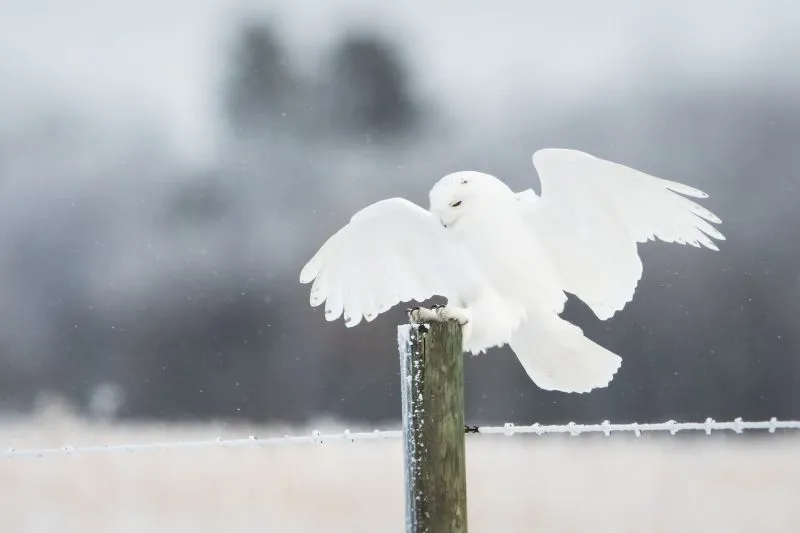
Snowy owls are the largest owls in North America, although in Europe the European Eagle owl is bigger, reaching up to 3.1kg.
Female snowy owls weigh on average 2.1kg (4.6 lb) and males – 1.6kg (3.5lb). This makes the snowy owls larger than their cousins the Great Horned Owls6 (source: The Snowy Owl, Eugene Potapov).
Snowy owls standing up are 0.5m (1.6 ft) tall and have a 3 times bigger wingspan of 1.5m (4.9ft) on average.
You can distinguish the female from the male snowy owl by looking at their feathers. Females have more brown and black spotting while males are more white especially as they get older.
10. Snowy owls don’t like living in dense forests like the rest of the owls.
Snowy owls are quite unusual owls. They inhabit open areas like the vast Arctic tundra and do not feel comfortable between the branches of the shady woods.
Open spaces like grasslands, marshes, and fields allow snowy owls to have an overview of the surroundings at all times and to be vigilant for predators but also prey.
See our full article to find out more about the habitats where snowy owls live.
11. Snowy owls can fly at speeds up to 80km/h (50mph).
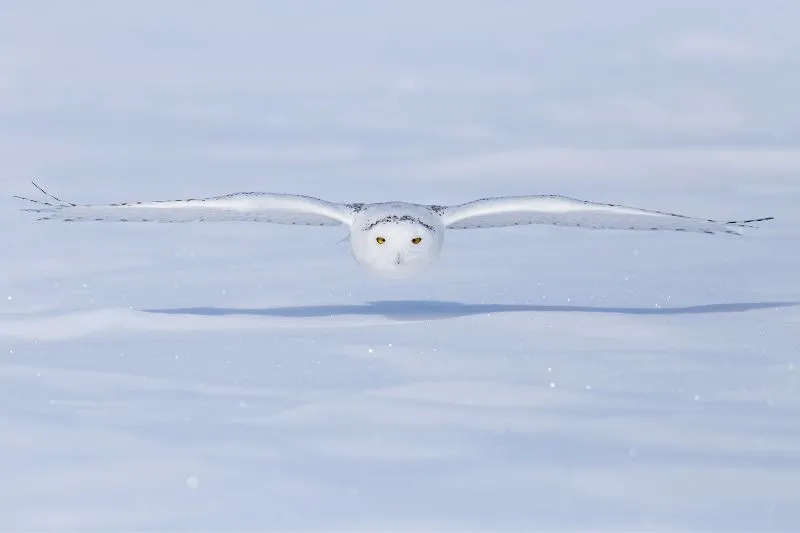
Snowy owls can fly up to 80km/h (50mph). They don’t migrate to a warmer climate during the winter like other birds, but they still fly long distances in search of a suitable place with plenty of food.
Snowy owls are recorded to fly as further as 4093 km each spring in search of appropriate habitat, flying for a period of 108 days7 (source: J.-F. Therrien, et al, Journal of Avian Biology, Vol. 45, Issue 6, 2014, pp/ 536-544).
The distance between the different areas searched by snowy owls in a year ranged from 220 to 2433 km.
12. Snowy owls can spin their heads to 270 degrees.
Snowy owls can spin their heads up to 270 degrees in both directions. Compared to humans which can turn heads only to 180 degrees, snowy owls can do a ¾ turn.
Snowy owls have 14 neck vertebrae which are twice what humans have and this gives them greater flexibility. Also, the skull of snowy owls is attached only to one point of the vertebrae whereas humans have two points limiting their movements.
13. Snowy owls’ dense feathers on their body AND FEET help them survive in the Arctic cold.
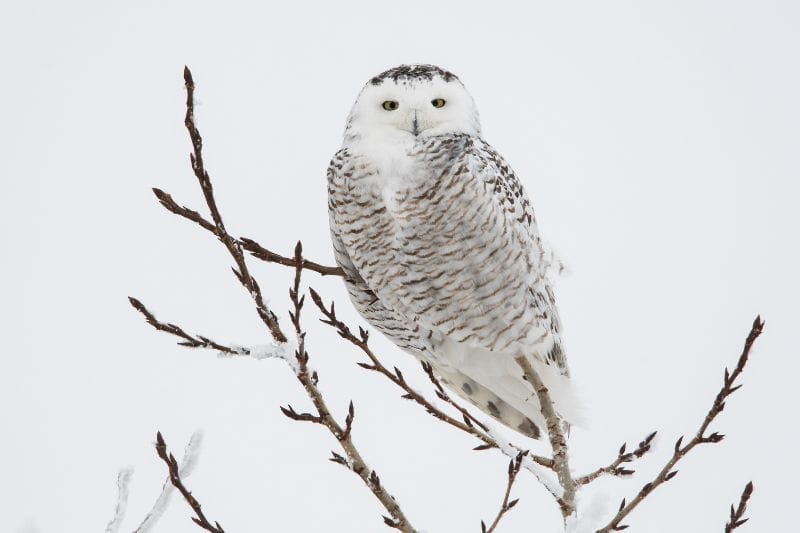
Snowy owls have long feathers covering their whole body including their face and legs which is unusual for owls. This serves as insulation from the Arctic cold.
Snowy owls have feet that are specially adapted to walk on the frozen tundra, looking like they are wearing white fluffy slippers because of the many feathers covering them.
Furthermore, the dense and soft feathering of snowy owls contributes to the noise reduction of their flapping wings when flying and the white coloration helps them camouflage with the polar habitat.
The thick layer of feathers makes snowy owls the heaviest owl in North America.
14. Snowy owls fly very silently, despite their size.
Snowy owls, just like all owls, are known for their silent flights. This helps them locate prey through their hearing without getting distracted by the noise of their flapping wings.
The silent flight of snowy owls also helps them sneak up very close to their prey animals without them noticing.
Snowy owls can fly slowly and quietly thanks to the low aspect ratio of length to width of their wings. The average wingspan of snowy owls is 150cm compared to the width of 40cm on average.
The big feathery wings of snowy owls are not the only reason for their silent flights. They have comb-like serrations at the front leading edge of the wing which reduces the flapping noise of the air breaking up in the wings.
15. The oldest snowy owl recorded was 30 years old.

Our final snowy owl fact is that the oldest snowy owls lived to around 30 and 28 years old, however, they were in captivity at Owl Rehabilitation Foundation in Ontario and in Switzerland, respectively8 (source: Bird Fact: https://birdfact.com/articles/how-long-do-snowy-owls-live).
The lifespan of snowy owls in the wild is 10-20 years. However, there is limited longevity data on snowy owls.
Snowy owls have high mortality and most of them die while they are still little in their nests or as juveniles. The biggest threats to young owls are parasites, viruses, starvation, and predation.
Related questions
Are snowy owls endangered?
Snowy owls are classified as “vulnerable” by the IUCN Red List which means they are not endangered just yet. However, in some areas, such as Norway, snowy owls are rated as “endangered” due to decreasing breeding records over the past 30 years. There are estimated to be between 14,000 and 28,000 mature snowy owls left. Read more here.
How many snowy owls are left?
Most recent estimations of snowy owl populations conclude that there are between 14,000 and 28,000 mature individuals. However, snowy owl populations fluctuate across different regions. So there is a high probability population numbers are overestimated now just as it was suggested in the past.
Why do snowy owls have yellow eyes?
Snowy owls have large eyes compared to other birds in the Arctic because it’s an important characteristic that allows them to hunt better at night by letting more light in. As snowy owls live in the arctic where the days can last more than 24 hours, their bright yellow iris ensures their vision is still clear during daylight. Learn more here.
What do snowy owls eat? Are snowy owls carnivores?
The snowy owl is a carnivorous animal whose primary food source is small mammals. Snowy owls’ favorite food is small rodents, especially lemmings. During the breeding season of snowy owls in the Arctic tundra their main prey is the highly abundant lemming. However, on some occasions, in different localities and out of their breeding habitat, snowy owls are also seen hunting down ducks, fish, and even hares. Learn more about snowy owls’ diet here.


![You are currently viewing 15 Curious Facts About Snowy Owls [#10 Will Surprise You!]](https://polarguidebook.com/wp-content/uploads/2023/02/Snowy-Owl-Facts.jpg)
